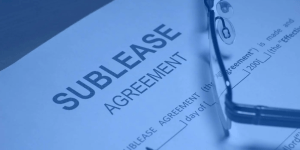The transition between tenants is a crucial period for landlords in Ontario. Ensuring a smooth handover not only leads to happier new renters but also fulfills legal obligations. The key question many landlords (and incoming tenants) have is: do landlords have to clean between tenants ontario? Let’s break down the legal requirements and some best practices.
The Legal Obligation: “Good State of Repair and Fit for Habitation”
The answer to “do landlords have to clean between tenants ontario” is a resounding yes, but with a bit of nuance. According to the Residential Tenancies Act, 2006 (RTA), specifically Section 20(1), landlords are responsible for ensuring a rental unit is in a “good state of repair and fit for habitation” at the beginning of a tenancy.
While the RTA doesn’t explicitly mandate “professional cleaning,” this obligation to provide a habitable unit inherently includes a reasonable level of cleanliness. A unit left with significant dirt, grime, or debris from the previous tenant would likely be considered not in a “good state of repair and fit for habitation.”
Specifically, between tenants, a landlord is generally obligated to ensure:
- Removal of all belongings: The unit must be completely clear of any possessions left behind by the previous tenant (unless explicitly agreed upon).
- Basic cleanliness: This includes, at a minimum:
- Sweeping or vacuuming all floors.
- Wiping down countertops and other surfaces.
- Cleaning the interior and exterior of appliances provided (oven, refrigerator, dishwasher).
- Cleaning toilets, sinks, and showers/bathtubs.
- Emptying and cleaning any waste bins.
- Sanitation: Ensuring the unit is sanitary and free from anything that could pose a health risk.
- Repairs are completed: Addressing any damages beyond normal wear and tear caused by the previous tenant.
- Working order of fixtures and appliances: Ensuring everything provided in the lease is functioning correctly.
Failure to ensure a basic level of cleanliness could lead to:
- Tenants refusing to move in.
- Tenants filing an application with the Landlord and Tenant Board (LTB) seeking remedies such as rent abatement.
- Damage to the landlord’s reputation.
Going Above and Beyond: Best Practices for Turnover
While the law sets a minimum standard, proactive landlords often go further to ensure a positive experience for new tenants and protect their investment. These actions are not strictly legally required but are highly recommended “good to dos”:
- Professional Cleaning: Hiring professional cleaners ensures a deep and thorough clean, going beyond what a basic turnover might entail. This can leave a lasting positive impression on new tenants.
- Carpet Cleaning: Professionally cleaning carpets removes embedded dirt, allergens, and odors, making the unit feel fresher and cleaner.
- Painting: A fresh coat of paint can significantly improve the appearance of a unit, covering scuffs and marks.
- Detailed Inspections and Preventative Maintenance: Taking the opportunity between tenants to conduct thorough inspections can help identify and address potential issues before they become bigger problems. This might include checking plumbing, electrical, and HVAC systems.
- Small Upgrades: Consider minor upgrades like replacing worn-out hardware, updating light fixtures, or refreshing caulking in bathrooms and kitchens.
- Air Freshening/Odor Removal: Addressing any lingering odors can make a big difference in how welcoming the unit feels.
- Providing a Welcome Package: A small welcome package with essential information or local guides can be a nice touch.
Document Everything
Regardless of the level of cleaning performed, it’s crucial for landlords to document the condition of the unit before a new tenant moves in. This can include taking photos and videos and completing a detailed move-in condition report with the new tenant. This documentation can be invaluable in case of future disputes about damages or cleanliness at the end of the new tenancy.
Conclusion: Cleanliness is Key for Landlords in Ontario
So, to reiterate, yes, landlords in Ontario do have an obligation to ensure a rental unit is reasonably clean and in a good state of repair before a new tenant takes possession. While the law doesn’t always specify the depth of cleaning required, providing a clean and habitable environment is a fundamental responsibility under the RTA. Going the extra mile with thorough cleaning and maintenance is not just good customer service; it’s a smart business practice that can lead to happier tenants, fewer disputes, and a well-maintained property.





